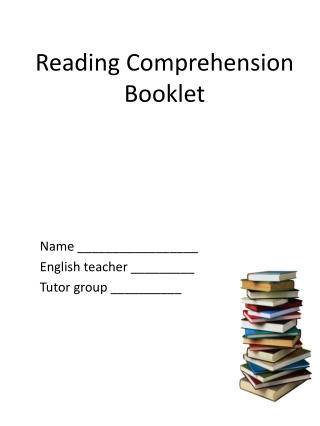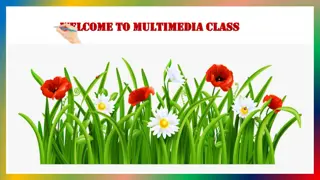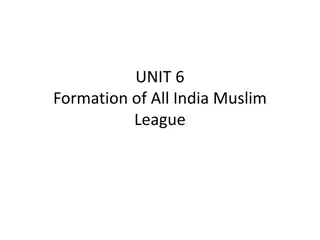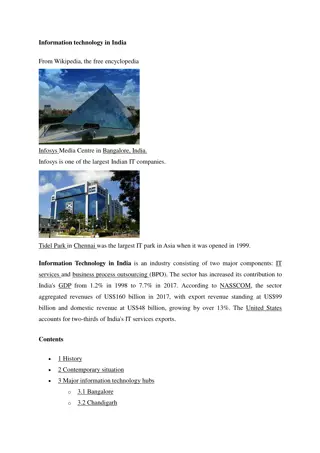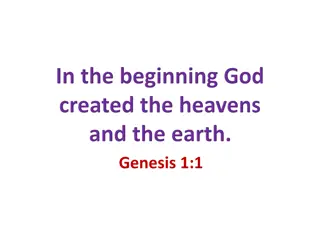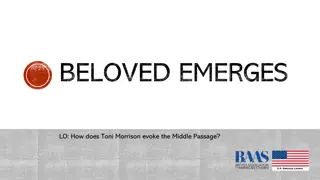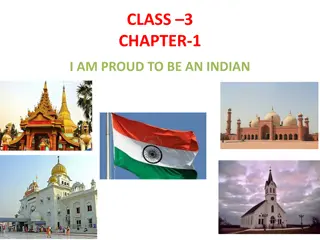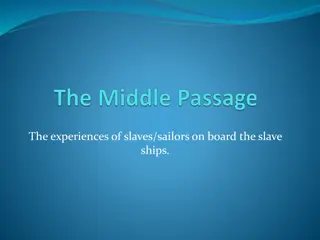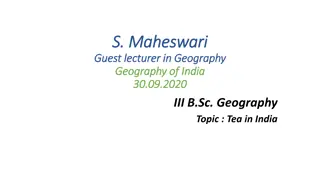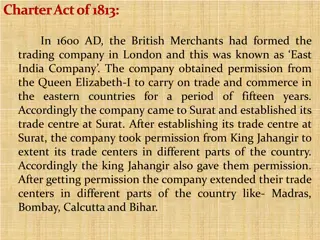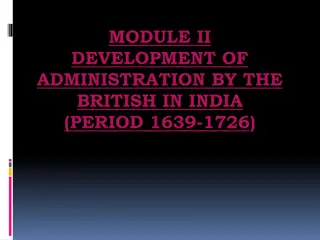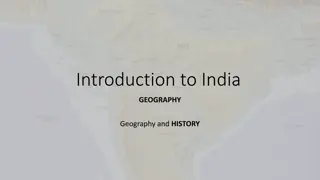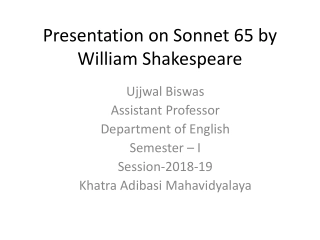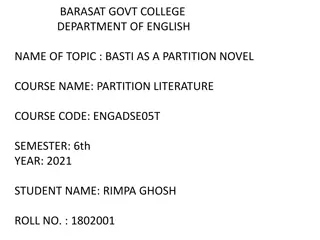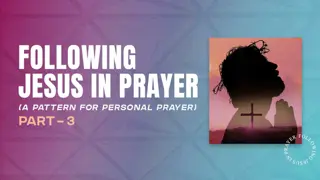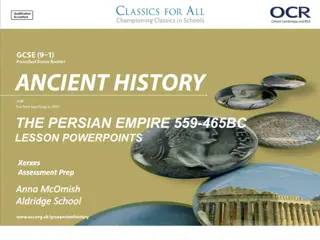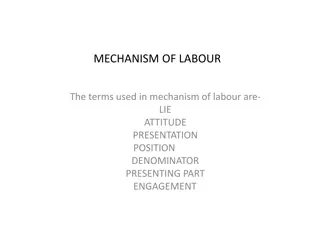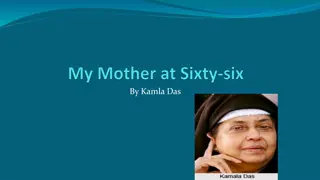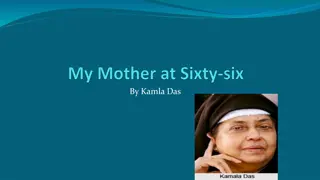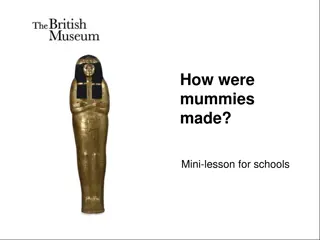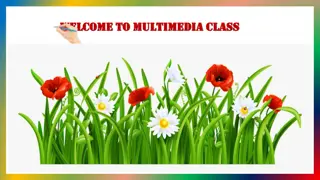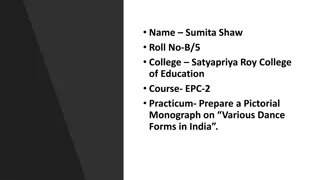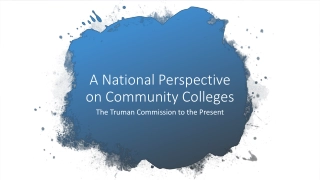Exploring "A Passage to India" Through Forster's Novel
The novel "A Passage to India" by E.M. Forster delves into the darker aspects of globalization and colonialism, contrasting Whitman's optimistic view. It follows characters caught in racial tensions amidst British colonial rule in India, questioning motives behind exploration and empire-building. The narrative unfolds around Dr. Aziz, Mr. Fielding, Mrs. Moore, and Miss Quested, focusing on a pivotal event at the Marabar Caves. Forster's exploration mirrors Whitman's call for deeper understanding and truth in a changing world.
Download Presentation

Please find below an Image/Link to download the presentation.
The content on the website is provided AS IS for your information and personal use only. It may not be sold, licensed, or shared on other websites without obtaining consent from the author. Download presentation by click this link. If you encounter any issues during the download, it is possible that the publisher has removed the file from their server.
E N D
Presentation Transcript
A PASSAGE TO INDIA:TITLE MA II SEM PAPER VII DEPARTMENT OF ENGLISH GOVT COLLEGE PAONTA SAHIB
The title of A Passage to India is a reference to Walt Whitman's poem, "A Passage to India." In the poem, Whitman takes his reader on an imaginary journey through time and space.
India is presented as a fabled land that inspired Columbus to seek a westward route from Europe to India, a route that ended up with his discovery of the Americas. While India is celebrated as an antique land, rich in history, America is celebrated as a force of modernization. Whitman sees both as caught up in an inexorable thrust toward globalization, where all countries are swept up in the same push toward progress
Forster's novel explores the darker side of what you might call Whitman's Song of My Global Self. Forster's expos of the costs and contradictions of the British Empire reveal that the dream of "lands [ ] welded together" could just be the cynical mantra for taking over other countries. While Whitman uses interracial marriage "The races, neighbors, to marry and be given in marriage" as a metaphor for international harmony, Forster's novel shows how even a hint of interracial attraction, let alone friendship, can inflame deep-seated racial animosities. Whitman ends his poem with an invocation to follow the examples of the great explorers and the great empire- builders to go on a "passage beyond," to other fantastic discoveries. But Forster's novel asks us to question the motives behind such a passage, particularly if it entails subjecting entire peoples to the rule of a foreign power. PreviousNext
Story The story revolves around four characters: Dr. Aziz, his British friend Mr. Cyril Fielding, Mrs. Moore, and Miss Adela Quested. During a trip to the fictitious Marabar Caves (modeled on the Barabar Caves of Bihar),[6]Adela thinks she finds herself alone with Dr. Aziz in one of the caves (when in fact he is in an entirely different cave), and subsequently panics and flees; it is assumed that Dr. Aziz has attempted to assault her. Aziz's trial, and its run-up and aftermath, bring to a boil the common racial tensions and prejudices between Indians and the British during the colonial era.
Walt Whitman in his poem Passage to India wants the soul to take a journey to India for further advance. The passage that Forster explores is also a similar journey. Like Whitman s cry: Passage to more than India , Forster s novel is more than a historical novel about India; it is a prophetic work in which Forster is concerned not only with the path to greater understanding of India but also with man s quest for truth and understanding about the universe he lives in.
The three levels of Meanings: In the little word, passage has three levels of meaning explored through three successive levels of the story political and racial tension, symbolic landscape and religious festivals. At a purely narrative level the novel tries to build a passage between two countries, which are divided not only geographically but also racially and politically. Unity can be achieved if people of both the races practice the principles of tolerance, understanding and kindness. At this level the theme of the novel is friendship and love
A Passage Vs Link: At a deeper level, the novel builds a passage between the achievements of the west with the wisdom of India, between the physical and the spiritual. The ideals of the West normality, rationality, personality, exclusion and the ideals of India impersonality, inclusiveness and love are juxtaposed. India is the home of rich spiritual heritage. India is a spirit; she is a mystery. The foreigner feel baffled and lost when they encounter this real India who manifests herself in the form of a shame, a mysterious wild animal, and the cave. Even the best representative of the highly cherished ideals of Western Culture, Fielding, feels that India is a muddle. In the face of this general opinion of the Westerners, Forster stresses that India is a spirit and to understand her one should regard her spirituality



